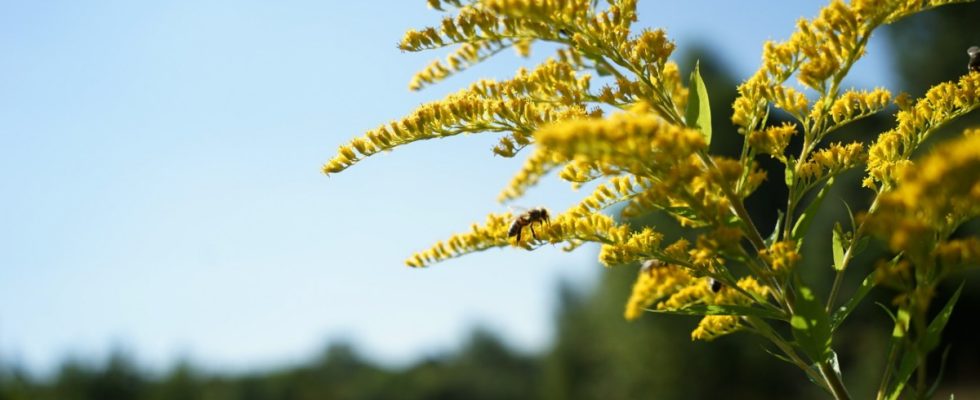Where the city veers into the countryside, such as at Warnberg Monastery in Solln, but also along railway lines and motorways, along rivers and settlement edges, they thrive particularly well: invasive plant species. Their illustrious names à la Canadian goldenrod, giant hogweed, Japanese knotweed or Oriental crested snail easily hide the fact that these neophytes are becoming a serious problem in the Munich city area.
Some are even a health hazard, like ragweed. Favored by climate change, such alien species are increasingly creeping into the city’s ecosystem. The Department for Climate and Environmental Protection has already felt compelled to set up an “Invasive Species Coordination Office”. Their goal is to “achieve uniform and coordinated measures when dealing with invasive species in the urban area and, if necessary, beyond.”
There is currently no systematic recording of neophytes or documentation of the population development of invasive species for Munich. That should change “as part of ongoing mapping.” In this context, the environmental department is particularly focusing on the major railway axes, classic “expansion corridors”. Another focus is the highways. Because of the constant air turbulence and the resulting seed flight, they promote a large spread of foreign flora.
The department addresses appeals to private individuals to handle garden waste carefully. Wild deposits of plant parts and cuttings in the wild promote the proliferation of invasive species, according to the warning. The city administration admits that it has so far been happy when it has achieved damage limitation on particularly valuable biotope areas and compensation areas under nature conservation law.
A problem that often turns out to be that the occurrence of invasive species does not stop at the boundaries of private property. In such cases, countermeasures would have to be “planned, coordinated and implemented” together. In order to effectively and sustainably push back neophytes, concerted actions are necessary “even over longer periods of time” – an enormous effort that also requires voluntariness. Only when species that are harmful to health appear would private landowners be contacted and explicitly asked to remove botanical intruders. If they don’t respond, the city will order replacement measures.
The dilemma with invasive species is so rampant everywhere that municipal and state authorities see combating them as “a future task with growing importance.” The European Union already adopted a regulation seven years ago “to prevent or minimize the adverse impacts of alien species on biodiversity and associated ecosystems, as well as on human health and the economy.”
The city’s climate and environmental protection department reminds us that the problems do not necessarily have to be of a plant nature. If goldfish and sunfish suddenly appear in Munich’s waters, it will be a challenge for environmental protection. Unfortunately, some aquarium enthusiasts repeatedly release such fish into ponds, lakes, ponds and rivers “without knowing the negative effects.” In order to keep invasive species in check, there is a need for action in this regard.

